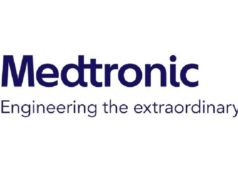
New data published in the January edition of Pain has confirmed the superiority of dorsal root ganglion (DRG) stimulation therapy (from Abbott) over traditional spinal cord stimulation (SCS) for patients suffering from complex regional pain syndrome (CRPS). The data, which include both short-term and long-term data from the ACCURATE study, also suggested that DRG stimulation benefits patients’ total mood and activity levels.
While the latest publication highlights the superiority of DRG stimulation therapy for patients suffering from CRPS, real-world insight also continues to support momentum around adoption of the therapy among providers offering DRG stimulation to their patients. Since the company (as St Jude Medical) launched DRG stimulation in April 2016 in the USA, more than 300 physicians across the country have been trained to deliver the therapy. The therapy is now offered in every state in the USA, and has been widely available in Europe since 2011.
“Historically, many patients with chronic pain resulting from complex regional pain syndrome or pain resulting from damage to peripheral nerves report inconsistent or inadequate pain relief from tonic spinal cord stimulation. As a physician this is frustrating because our ultimate goal is to deliver options providing meaningful pain relief,” says Timothy R Deer, president and chief executive officer of the Center for Pain Relief in Charleston, USA, and lead author of the ACCURATE study publication. “The findings highlighted in our publication align with what I have seen in my practice since US approval of DRG stimulation: that DRG stimulation offers a superior option for CRPS-related chronic pain and improved quality of life for my patients.”
Findings from the ACCURATE Study
The latest publication in Pain highlights both three-month and 12-month data from the ACCURATE study, the largest study to date evaluating patients suffering from chronic lower limb pain associated with CRPS. The 12-month data were previously presented at the 19th annual meeting of the North American Neuromodulation Society (NANS) in Las Vegas, USA, in December 2015 and the three-month primary endpoint data were originally presented at the International Neuromodulation Society (INS) annual meeting in June 2015.
The ACCURATE study showed that after both three and 12 months, DRG stimulation therapy offered patients:
- Sustained and superior pain relief: After 12 months, a statistically significant number of patients receiving DRG stimulation achieved meaningful pain relief and greater treatment success when compared to patients receiving traditional SCS (74.2% vs. 53%).
Secondary endpoint data suggested:
- Reduced paraesthesia: At 12 months, more than a third of patients who received DRG stimulation were experiencing greater than 80% pain relief with no paraesthesia.
- Improvements in quality of life: At 12 months, DRG patients had statistically greater improvements in their physical component (p=0.04), general health (p=0.03) and social functioning (p=0.03) when compared to SCS patients.
“Data such as these are critical to providing patients hope that there are treatment options out there that can provide meaningful pain relief for the excruciating pain CRPS sufferers deal with every day,” says Jim Broatch, executive vice president and director of the Reflex Sympathetic Dystrophy Syndrome Association (RSDSA), a group specialising in providing resources for patients battling CRPS. “Our organisation, which has focused for years on advancing treatments for patients with CRPS, applauds the physicians and patients who took part in this study and who have helped advance the understanding of this condition and the impact of DRG stimulation on improving the lives of patients everywhere.”
Patients battling CRPS often face prolonged or excessive chronic pain following an injury or trauma. The condition is believed to be caused in part by damaged or malfunctioning nerves, and it affects the way the central and peripheral nervous systems transmit and receive pain signals. Stimulation with Abbott’s Axium Neurostimulation System targets nerves within the DRG, a spinal structure made up of sensory nerves. DRG stimulation has been clinically-proven to provide pain relief directly to the area of the body where pain occurs.












